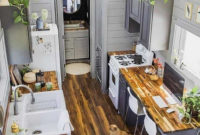A kitchen is the ‘core’ of every home; the heart, so to say. Well the heart of the matter of every home is the area where food is cooked, food keeps a family together, so in essence it can be said that the kitchen keeps the home together!
The evolution of the kitchen as an area of focus began with modern inventions of cooking appliances like the stove or cooking range along with the infrastructural development of water supply.
During the 18th and 19th centuries, technical advances in cooking food and the utensils used in the preparation of food dramatically changed the “face” of the kitchen, in the sense that architecturally kitchens went through drastic changes from what they used to look like in previous centuries.
Today, a modern kitchen is fully equipped with cooking range, various kinds of utensils, hot and cold water supply through pipes, refrigerator, ovens, cabinets for storage, pantry for utilities and many other features. An additional area for laundry and dishwashing may or may not be added to the kitchen space.
In ancient times
Before the 18th century and construction of water pipes, water had to be fetched from nearby wells or other sources.
In ancient Greece, an open patio with roofing served as cooking space; ordinary houses at that time had rooms which were arranged around a central courtyard where women usually did all their household chores.
The more wealthy people had separate kitchens where food was cooked; usually the kitchen found a place next to the bathroom so that the kitchen fire could heat up both rooms.
These two spaces were accessible from the courtyard; a small storage room behind the kitchen served as utensil storage.
During the Roman period, many commoners had no private kitchen; they had to use large public kitchens to do their cooking. These public kitchens were equipped with mobile bronze stoves.
The wealthier or aristocratic Romans had spacious rooms set a little away from the main portion of the house that served as kitchens.
The setting apart of the kitchen from the main building was for two prime reasons – preventing smoke and ash and also most cooking in wealthy homes was done by slaves who could not come into direct contact with the nobility.
The fireplace was placed at a slightly higher level than the floor but against a wall, which meant that the person doing the cooking had to squat or kneel to do the tasks.
In the Middle Ages
In medieval Europe, an open fire or fireplace used to be placed under the highest point of a building which was referred to as a ‘longhouse’. The kitchen was placed between the fireplace and the entrance to the house.
Here too, luxurious and wealthy homes had separate kitchens, sometimes more than one depending on the type of food that was prepared. A hole in the roof at one end served as a chimney to let out the smoke.
Most kitchens during this era were dark, ill-lit and sooty places because of the accumulation of smoke and soot; the term ‘smoke kitchen’ was very apt.
Large homesteads where generations of families lived together had kitchens that were placed in sunken floors in adjacent buildings to keep the living areas free from smoke.
The earliest findings of stoves date between the 3rd and 6th centuries from references in Japan to a clay and mortar unit called ‘kamado’. These were fired using charcoal or wood through holes in the front and top of the stove, into which was hung a pot.
This type of stove continued to be in use for many centuries with modifications from region to region. In Japan, a kamado was the main method for cooking the staple food, which was rice.
The advent of the chimney somewhat changed kitchen styles; the cooking spot moved to be placed against a wall instead of being in the room centre.
Fire hearths were built and the vault beneath stored firewood; metal pots made of bronze, copper and iron started making their appearance. Depending upon the temperature required for cooking the food the pots were hung higher or lower over the fireplace.








































